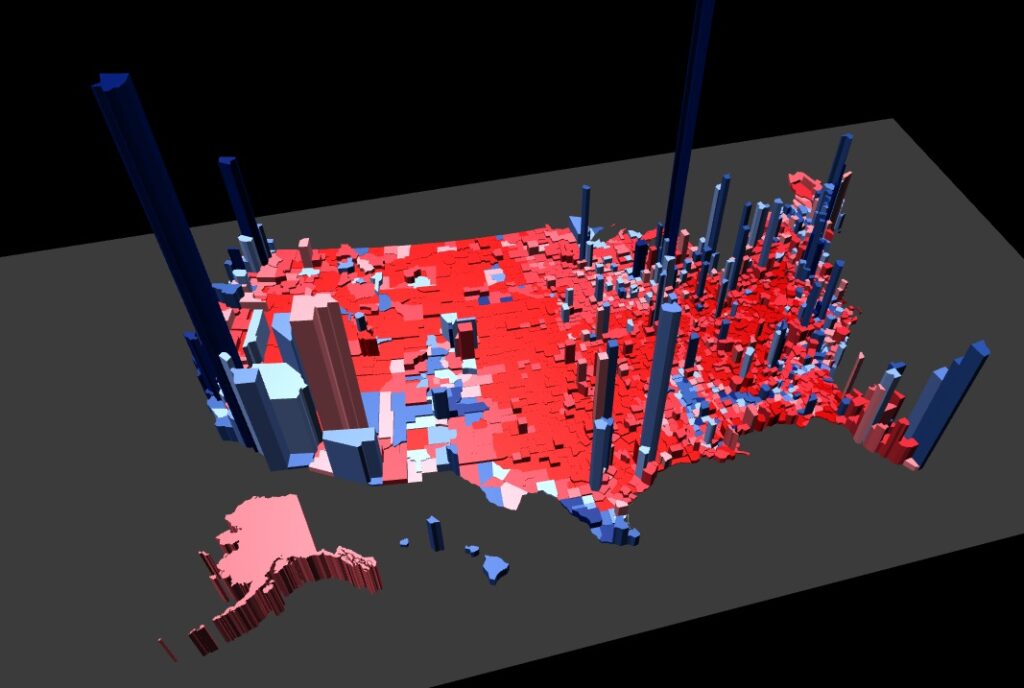The Wall Street Journal has an interesting article [SEE HERE] outlining inter-connected data points for various state economies in a post-pandemic environment.
The topline takeaways are: (1) Employment in red states has fully recovered, and now exceeds the number of jobs as before the pandemic. (2) Employment in blue states remains below the pandemic numbers; meaning they have not recovered. (3) Net migration still shows people fleeing blue states like New York, California and Illinois; while (4) Net migration into red states like Florida, Texas, North/South Carolina and Tennessee is continuing.

(Wall Street Journal) – […] Forty-six million people moved to a different ZIP Code in the year through February 2022, the most in any 12-month period in records going back to 2010, according to a Moody’s analysis of Equifax Inc. consumer-credit reports. The states that gained the most, led by Florida, Texas and North Carolina, are almost all red, as defined by the Cook Political Report based on how states voted in the past two presidential elections. The states that lost the most residents are almost all blue, led by California, New York and Illinois. (read more)
The professional business class analysts (eyeroll) at the WSJ attribute the demographic shifts to the worker disconnect from the office. Meaning workers can now work from home and are moving to environments where the quality of life is better. White collar workers no longer bound to the geographic limitations of central office locations.
While some of that is likely accurate, there is no consideration for the lockdown effect. The results of the pandemic showcased a very brutal acceptance, more people now seemingly realizing the politics of their regional leadership has a direct and consequential impact to the quality of their life. The blue state leaders, ideologically disposed to dismissing the opinion of citizens, generally dispatched any consideration for the quality-of-life impact they created. The people were irrelevant.
While there were some new revelations about the ideology of some red state leadership having a favorable disposition toward unilateral power (Ohio, Kentucky examples), for the most part the red states were more free and less intrusive in general life. This socioeconomic facet is difficult to quantify and therefore ignored by the analysts looking at the data.
(WSJ) […] Analysts who have studied the migration attributed much of it to the pandemic’s severing of the link between geography and the workplace. Remote work allowed many workers to move to red states, not because of political preferences, but for financial and lifestyle reasons—cheaper housing, better weather, less traffic and lower taxes, the analysts said.
There is no data on what role, if any, political preferences have played in migration decisions. Some researchers have reported that pandemic restrictions played a role for some people who moved.”
When the pandemic first began, and more specifically when the government rules, fiats and ‘lockdown’ approach first started to surface, many people predicted there would be a cleaving of the population based on ideology. People trapped in blue states would want to flee the rules and live in red states. However, this is difficult to quantify.


